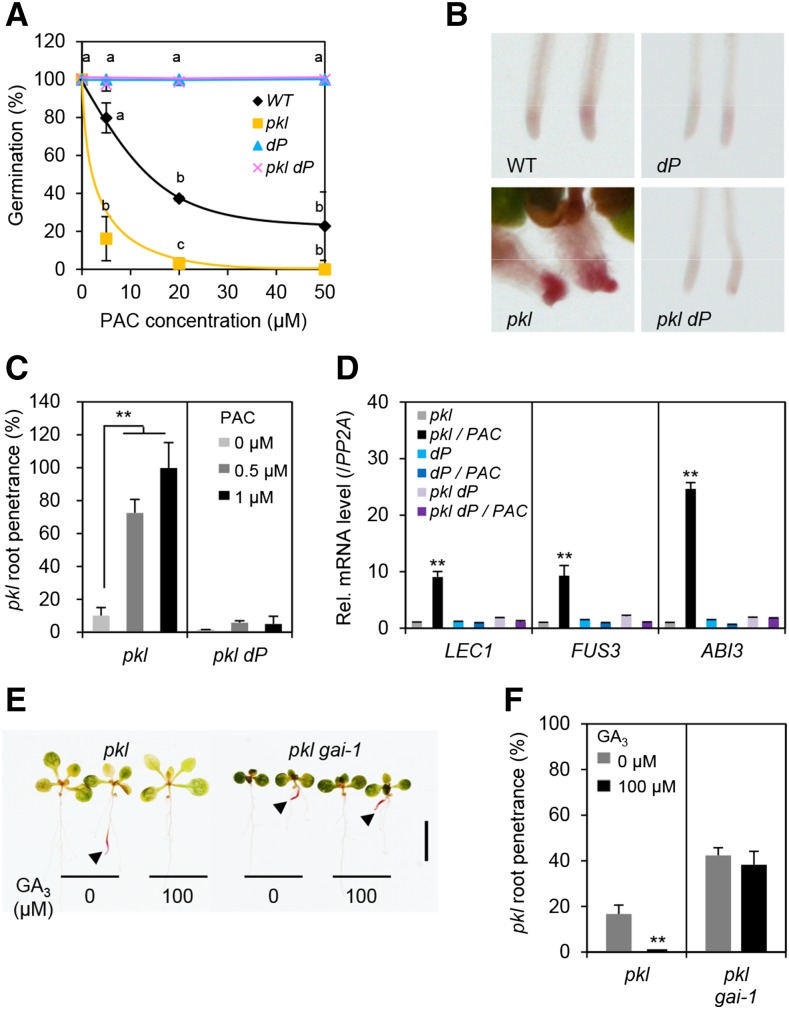Figure 4.
dellaP rescued seed germination defect and pickle root phenotype of pkl. A, dP rescued seed germination of pkl in response to PAC treatment (average of three biological replicates). Different letters above the curves indicate significant differences, P < 0.01. The data for pkl and wild type (WT) shown in this figure are the same as those in Supplemental Figure S1. B and C, Pickle root penetrance is reduced by dP but enhanced by PAC. B, Sudan red staining of wild type, dP, pkl, and pkl dP. Roots of 9-d-old seedlings grown under the continuous white light (Wc) in the presence of 0.5 µm PAC are shown. C, Seedlings were grown on Murashige and Skoog media containing 0, 0.5, or 1 µm PAC under Wc. D, Relative transcript levels of seed-specific genes in pkl, dP, and pkl dP seedlings grown in 0 and 0.5 µm PAC under Wc. three biological replicates). E and F, Pickle root penetrance was reduced by GA, but enhanced by gai-1. Representative Fat-red-stained seedlings of pkl and pkl gai-1 grown in 0 and 100 µm GA3 media under Wc. E, scale bar = 5 mm. F, Quantification of pickle root penetrance in pkl and pkl gai-1 grown as in E (average of three biological replicates, n > 30). In A, C, D, and F, the data are means ± se. In A, different letters above the bars indicate significant differences, P < 0.01. In C, D, and F, **P < 0.01.

